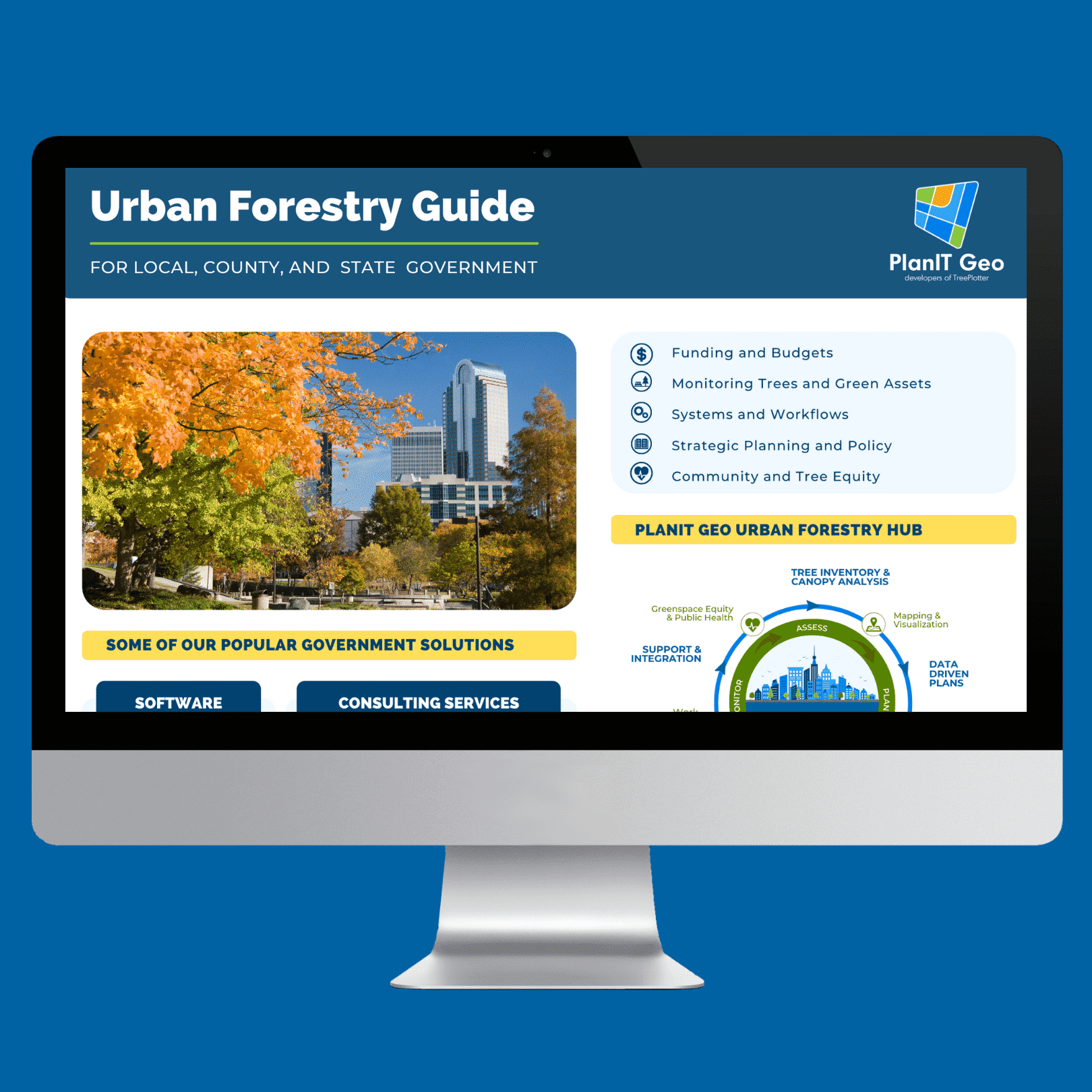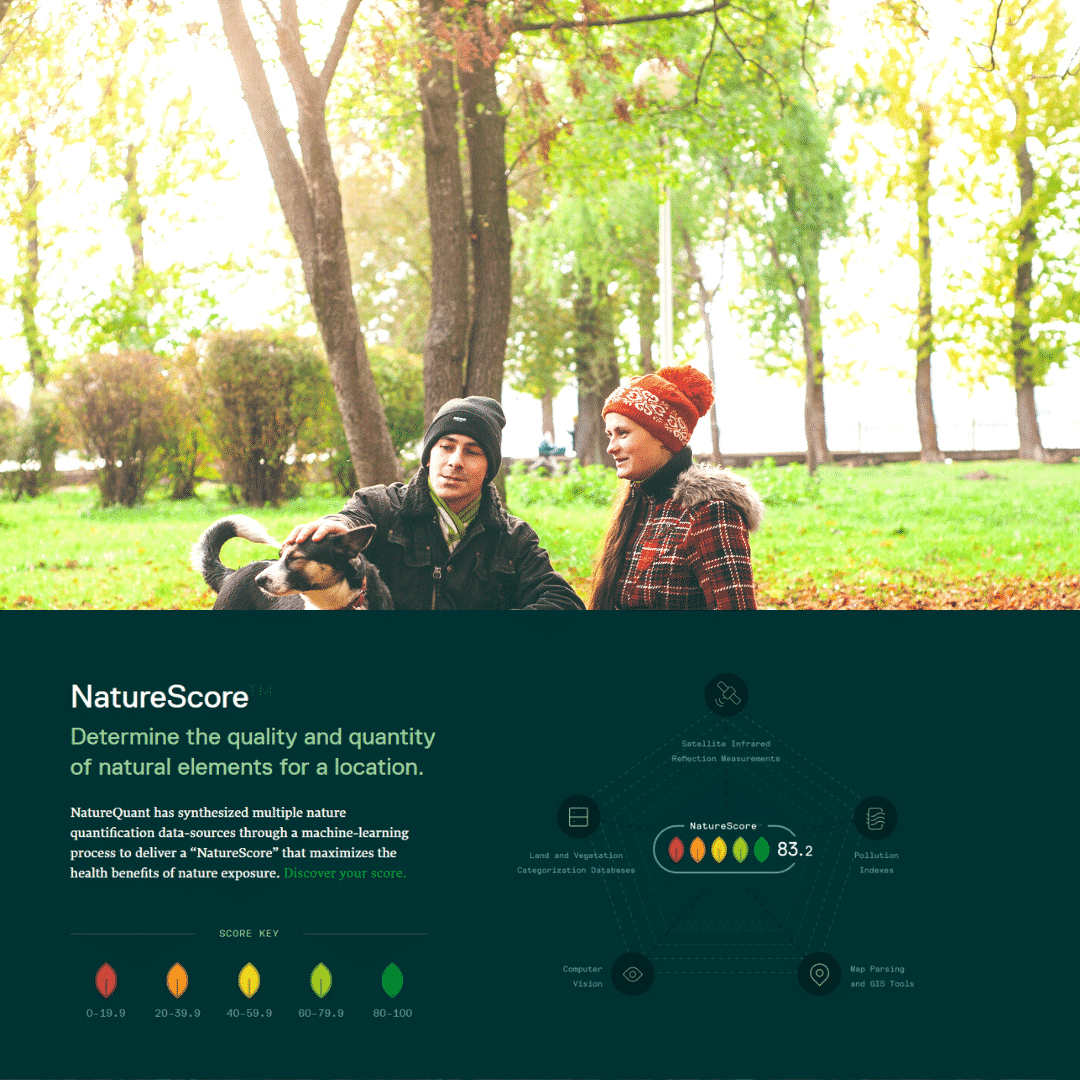The New i-Tree Benefits API Is Here
Treeplotter’s tree benefit calculations are now more accurate and available in any global currency
July 25, 2022 | Alec Sabatini

Your ability to estimate the ecosystem services of trees just took a big leap forward.
i-Tree, the foundational suite of software tools for assessing urban forest resources, has launched a major upgrade to their tree benefit calculations. The newly released i-Tree benefits engine uses updated science, additional inputs, and an expanded tree species list to generate more accurate tree benefit estimates.
TreePlotter INVENTORY is the first third-party software to implement the new i-Tree benefits API (application programming interface), meaning that our Ecosystem Benefits module will provide results directly from the i-Tree engine. Additionally, we’ve expanded the Ecosystem Benefits module to support metric units as well as any desired global currency. Urban forest managers around the world can now get precise, locally-relevant monetary values on how their trees benefit their surrounding community.
TreePlotter INVENTORY is THE FIRST THIRD PARTY SOFTWARE to implement the new i-Tree benefits API (application programming interface), meaning that our Ecosystem Benefits module will provide results directly from the i-Tree engine.
About the Change
This new i-Tree benefits API has replaced the National Tree Benefits Calculator (NTBC), which for years was the best available science for third-party software to use. Though grounded in thorough research, the NTCB has limitations, such as its reliance on static look up tables and reference points to generate outputs. The new i-Tree benefits engine mimics the i-Tree Eco tool and operates much more dynamically, using more current, local environmental data to estimate values. For example, the air pollution removal method utilizes hourly weather data and daily particulate matter data to estimate removal quantities.
PlanIT Geo has worked with the i-Tree team for two years to test and support the launch of this new API. We are thrilled to finally release this to TreePlotter users worldwide. This is no beta test either. Every tree stored in every TreePlotter INVENTORY application that has added the Ecosystem Benefits module has now been updated, assuming they have necessary data fields filled out. For more details on updating existing trees in TreePlotter, please see our support page.
Unlike the free NTBC, the new i-Tree benefits API is a pay-to-use system. The cost is around a few US cents per tree, however, there are reduced rates for mass updates to existing tree databases. This new cost does require a price increase for the Ecosystem Benefits module. Your Account Manager can provide more detailed information on the expected pricing changes.
The i-Tree Benefit Estimation Process
So how does i-Tree generate these benefit values? It starts with a user in the field providing measurements of the physical structure of a tree. This includes the location, diameter at breast height (DBH), species, and condition for individual trees. The new i-Tree benefits engine also requires crown light exposure (CLE) to be logged. CLE measures how many sides of a tree receive light, with an input range of zero to five sides.
This physical information is combined with local environmental data to estimate the tree’s functions, such as growth rate and gas exchange. Those tree function estimates are then converted into resulting services, like the amount of pollution removed from the air. Next, those services are combined with demographic data and atmospheric conditions to predict their benefial impact, such as cleaner air and improved human health.
Those beneficial impacts are quantified into specific units, like pounds of CO2 captured or gallons of stormwater intercepted. Finally, the full assortment of benefits are converted to monetary amounts, providing a comprehensive metric to gauge the impact of a tree.
This entire process is backed by research from the collaborative public-private partnership behind i-Tree. Since its launch in 2009, the National Tree Benefit Calculator has been updated periodically as new research passed peer-review. This new change is a lot more than fine-tuning some methodologies though. It’s a whole cloth replacement of the NTBC, an entirely new estimating engine, and it’s finally time to rev it up!
New Currency Conversions
This is a separate project from the new i-Tree benefits update, but their release dates happened to align. We can now configure the Eco Benefits Module (used with TreePlotter INVENTORY) to provide benefit outputs in any global currency. Additionally, metric units are also now available in the module, so clients can get kilograms of pollution prevented and cubic meters of stormwater intercepted, if desired.

Ready To Estimate The Benefits of Your Trees?
If you are a current TreePlotter INVENTORY customer, but do not have the Ecosystem Benefits module, please reach out to your account manager about getting it added to your application. For those who do not have INVENTORY and/or do not have a current inventory of their trees, let’s start a conversation about your options for measuring the impact of your urban forest.
Related Resources

This Is How You Measure The Impacts of Nature On Public Health
How can the well-documented health impacts of nature exposure be condensed into an actionable form? Let’s look at the process of NatureScore™, a tool from one of PlanIT Geo’s partners, NatureQuant.

Urban Forestry Guide for Governments
There is a lot that goes into running an effective urban forestry program. As a hub for urban forestry innovation, PlanIT Geo is able to provide support and guidance at any step in a program’s evolution. This guide lays out all of the solutions that we have used to help public urban forestry programs grow, improve, and adapt.

How to Communicate the Benefits of Trees to your Community
For those who work in urban forestry, the benefits of trees are a well-established fact. The general public however, tends to have a limited understanding of tree benefits, both in scope and depth. This guide outlines how to communicate the benfits of trees to yoru community.

Putting a Number on the Health Benefits of Nature
This webinar explores how NatureQuant is using innovative tech, machine learning, and big-data to quantify nature exposure and potential health benefits, the tools they’ve created to share this data, and how this information will be incorporated into PlanIT Geo’s software and services thanks to a new partnership.
Stay Up To Date With The Latest News and Events
Join Our Community
Stay informed on the urban forestry industry with our monthly TREEbune newsletter, live webinars, and industry-specific content delivered to your inbox.
Urban Forestry Webinars
PlanIT Geo has a substantial on-demand webinar library. Get CEU credits, grow your knowledge base, and stay current on cutting edge industry technology.
Follow Us
We love to share industry-related news, software tutorials, blogs, and company news across our social channels.
Stay Up To Date With The Latest News and Events
Join Our Newsletter
Stay informed on the urban forestry industry with our monthly TREEbune newsletter, live webinars, and industry-specific content delivered to your inbox.
Urban Forestry Webinars
PlanIT Geo has a substantial on-demand webinar library. Get CEU credits, grow your knowledge base, and stay current on cutting edge industry technology.
Follow Us
We love to share industry-related news, software tutorials, blogs, and company news across our social channels.

